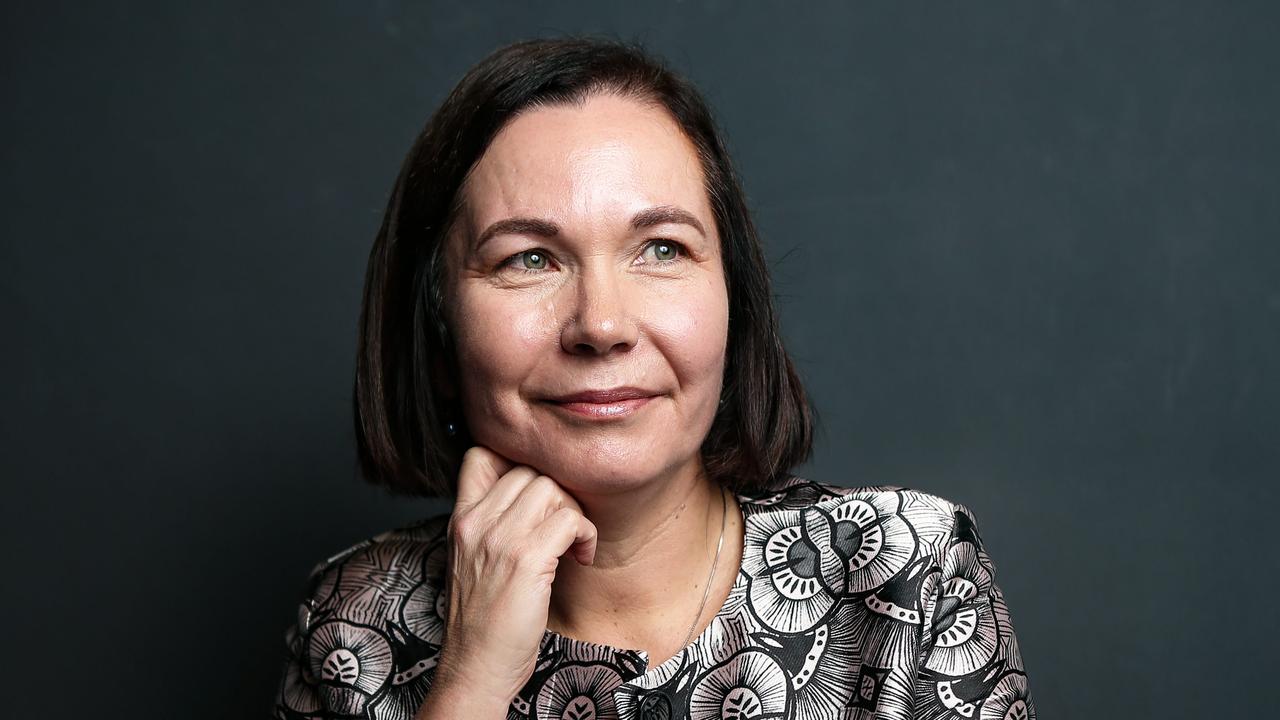Great dividing rage over water

While some decry the Murray-Darling plan, others are on a quest for survival
AFTER years of heartbreak the dams are brimming on the fertile plains west of the Great Dividing Range. The new season cotton is in, cattle are getting fat and every spare metre of arable land is covered with the green and gold shimmer of wheat that is almost ready for harvest.
To the untrained eye even the paddocks of Patterson's curse can resemble an endless meadow of lavender somewhere in the south of France. But appearances can be deceiving.
The scars of the one-in-100-year drought are not far beneath the surface. Shops that once sold electrical goods and non-essential items sit empty on the main street of Narrabri, northwest NSW.
Further south, in smaller towns such as Bundella and Premer, many farming families left long ago and are unlikely to return.
"The towns are dying," says grazier John Traill. "You used to be able to buy a tractor and plough and have a beer in Premer but you can't do any of those things now."
Further north in the high-technology cotton bowl that straddles the NSW and Queensland border, the death grip of drought has been replaced with what is seen as the unrelenting smother of government regulation.
Out bush, everyone can relate to the new television show, Keeping up with the Joneses, in which Northern Territory country kids drive around the family property on Dad's lap. They all do it. Just as they all lament the creeping hand of occupational health and safety laws that prohibit what in the past were perfectly normal tasks.
But as everyone now knows, water buybacks are the pressing existential threat.
Although ending the blame game between states and establishing a national system to manage water assets may seem like a good idea in Canberra and the big cities, it doesn't wash in the NSW northwest.
In an area where landholder rights are considered sacred, there are plenty of people prepared to see the Murray-Darling Basin Plan as a UN plot to depopulate the regions.
More prosaically but more widely, it is seen as a South Australian ploy to cover up that state's long-term maladministration of its water assets. The fact South Australian Senator Penny Wong led the Rudd government's water buybacks has not helped perceptions.
T-shirts given out at the sell-out Narrabri town meeting read "Save the Murray -- Remove the Barrages", structures designed to divert water to the lower lakes.
It is clear the handling of the Murray-Darling Basin water plan has the potential to cause deep and lasting rifts. State against state, city against country, and farmer against fancy-pants environmentalists who forget to ask "what they are having for breakfast and pulling on to wear".
The sense of injustice and fear at town meetings to consult on the Murray-Darling Basin Authority plan is palpable.
Third-generation Narrabri farmer Andrew Carberry, who jointly runs a 4500ha cotton, grain and cattle business with his cousin Mike on land their Gallipoli-veteran grandfather cut out of the bush by hand, senses the change in sentiment.
"The reason we are losing the debate is because the only time people hear anything about the bush is when it's about floods, drought or locust plagues," he says.
"A generation ago most people in the city had a connection with the bush but these days they don't know anything or anyone over the Great Dividing Range."
Throughout the drought the Carberries -- who have on-farm dams big enough to waterski on -- have turned to technology to stay ahead of the curve.
They may not have had water allocations from the river for many years but they still fiercely oppose the proposed cuts. Most of all, they resent being told how to go about their business.
The Carberries have sunk $1 million into water efficiency measures and the latest technology. Electronic probes take constant real-time readings of soil moisture content and growth rates in every sector of the field. Satellite-guided systems ensure chemicals are applied at the right rate in the right area to help promote a consistent yield.
Their farm is considered a medium-sized business but it still contributes $3.5m a year directly to the local economy and is a significant employer.
With his eyes firmly fixed on the barrages that hold the water back at the end of the Murray River in South Australia, Carberry does the calculations that make his blood pressure rise.
"The Darling River contributes 14 per cent to the Murray-Darling Basin. Eighty-six per cent is from the Murray. If I was looking for an answer I'd be looking at the 86 per cent not the 14. What about you?" Carberry asks.
"Out of that 14 per cent the Namoi contributes 25 per cent to the Darling, 75 per cent of which is allocated to the environment, 2 per cent to high security such as towns and zero to 25 per cent goes to irrigators, depending on if there is water there or not.
"That means if they took all the water off us, that would only be less than 2 per cent of the Murray."
Carberry's calculations may be right but they may miss the point. The Murray-Darling Basin plan is not about applying a Band-Aid to South Australia. According to Murray-Darling Basin Authority chairman Mike Taylor, the environmental issues are widespread.
"Right across the basin there are key parts of that system that are not in good shape," Taylor tells Inquirer. "Our task is also to look at the watering requirements over the long term.
"It is not about when they are wet or dry, it is about making sure over the long-term cycle they are going to be better than they are today."
Contrary to popular misconception, the plan has not been designed on the basis of the drought conditions of the past 10 years, but more than a century of rainfall records. So, the Murray-Darling plan is not just about fixing the mouth of the Murray River, it is about the health of the Murray-Darling Basin overall.
And while debate rages about what impact water cutbacks might mean for regional employment, it is not a one-way street. There are also equally pressing questions about what it means for the future of farming methods.
Restoring environmental flows will certainly improve the health of productive country downstream. There are many farmers who believe they have been squeezed for decades by the actions of irrigators further up river. Graziers and tourism operators at Macquarie Marshes, downstream from Dubbo, provide the evidence.
Garry Hall, whose family has run a grazing property at the environmentally significant Macquarie Marshes for more than 100 years, says water allocations upstream helped speed the exodus of farmers from the area.
"This area here used to be the most valuable on the river but not only have we lost our productive ability it is hard to get people to come back to live," he says.
Water buy-backs will increase the reliability of water for the marshes and surrounding properties.
"By the government buying this water, they are going to store it in the dam, the dam is going to
be fuller more often and that is what we want down this end because it is mimicking natural flows," he says. "It should increase the security for the irrigators and the environment."
But although taking water from irrigators may improve the productive potential of land around Hall's farm, he does not expect to see an influx of new neighbours.
"For people to move from irrigation, it is like moving from [Sydney's] Double Bay to the western suburbs," he says.
Myra Tolhurst, who runs a tourism business, Willie Retreat, at the internationally renowned marshes, and whose late merino wether George earned the Guinness World Record as the longest living sheep (21 years, five months and three days), is thankful for the additional water and doesn't mind the isolation.
"I would no sooner live next door to a house than I would fly in the air," she says.
Tolhurst's husband, Phil, passed away suddenly late last year. Before he died, Phil predicted the 11-year drought would break at Christmas. According to Tolhurst it started raining on Christmas Day, again on New Year's day and hasn't stopped since. She says there has been 68.5cm of rain this year against an average of 38cm.
"For the first time in a decade we are getting releases of water from Dubbo," she says.
"It is the best I have seen it in 28 years since I arrived."
So far Tolhurst's retreat has had 836 visitors this year and she doesn't have a bad word to say about Senator Wong.
"We think it [the buyout] is great," she says. "Everybody won't agree but people are people, aren't they?"
For Traill, whose family has farmed the deep black soils of the Liverpool Plains for three generations, the Murray-Darling plan indicates a much bigger and long-overdue transition needed in agriculture. Traill won a $25,000 scholarship for his "best practice" approach before having an epiphany and making a painful decision to change course.
"We were spending $250,000 a year on chemicals and spraying everything with a helicopter,"
he says. "Great chunks of the property were bare earth because sheep would stand in the same area of
the same paddock, and erosion gullies were washing our soil away downstream."
Eight years on, the weeds are in balance, the gullies are stable, the ground cover is complete -- greatly increasing water penetration -- and a 1500-strong flock of sheep is rotated to a different paddock every five or six days as part of a grazing plan that does nothing more complicated than mimic nature.
Paddock size has been reduced by 90 per cent to between 16 and 20ha, and animals are returned to each paddock every 75 days in good times and up to 240 days during drought.
The system is being used all over Australia to grow beef and sheep and once established, it is claimed to halve input costs and double the carrying capacity of the land.
Traill says he is implementing a system that removes the need for synthetic pesticides and herbicides. In a business dominated by price takers, Traill hopes his approach will allow him to brand his sheep organic and become a price maker. But his ultimate goal is to "achieve a robust system that can produce food for the long term".
He has had extensive hydrology tests done on the property to show that of the 20,000 litres of water a day provided to sheep, 85 per cent goes back into the aquifer and the remainder is more than replenished through rainfall on the property.
Traill has bought out his two sisters and parents, refinanced the farm on the new turnover and is confident the property will continue to improve as an asset to be handed on to willing children.
The Carberries, too, have their sights set on their fourth-generation farmers taking control of the family property. They have been brave enough to make the investments necessary in the hard times to maximise their on-farm water assets, including detailed hydrology reports to prove what they are doing.
Traill says he uses grass to package sunshine into sheep meat. Carberry says he turns water into cotton.
Whatever happens with the Murray-Darling Basin Plan, water regulation is only going to get tougher.
Whether it's using the latest satellite technology or mirroring the natural cycle of the Serengeti plains, working within the capacity of the land is increasingly going to be the key to long-term survival.


